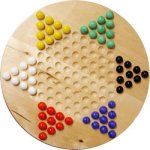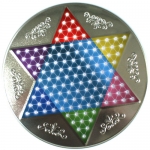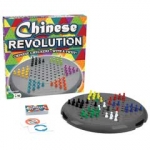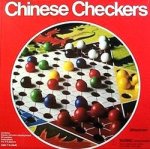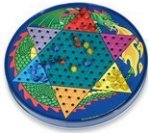Chinese Checkers is played on a star-shaped game board. Each player uses markers of a different color placed within one of the points of the star. The object is to move your markers across the board to occupy the star point directly opposite. The player getting all markers across first wins.
Even though the game is known as "Chinese Checkers", it was not developed in Asia, nor is it a variation of Checkers. Chinese Checkers is descended from an earlier game called "Halma", which is played a a square game board. Chinese Checkers was invented in Germany in 1892; the name "Chinese Checkers" originated in the United States, as part of the marketing campaign for the game.
The game is started by anyone and the play continues to the left ofthe starter. One can move or jump in any direction as long as one follows the lines. As in checkers, move only one hole or jump only one marble, although successive jumps are permissible wherever they can be made in any direction.
2-6 players may participate. Partners may be chosen and in the event of one partner finishing first, he or she is permitted to help the unfinished partner move the latter's marbles. As the playing of the game draws to a conclusion it must be distinctly understood that a player cannot stubbornly remain in his or her original starting point in order to prevent an opponent from finishing the game. Complete rules are available here and here.
